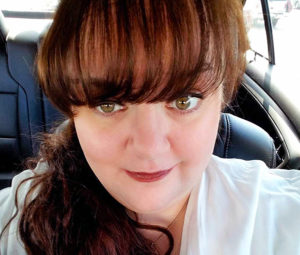In the US, there is one suicide every 11 minutes.₁
While life-threatening, mood disorders are also highly treatable. People who live with depression or bipolar can and do thrive. We spoke to suicide survivors in the DBSA community and asked them to share their experience with us.
Make a donation today to support DBSA’s life-saving programs.
Stories from peers who have survived suicide
 Carrie Cantwell
Carrie Cantwell
Suicide Survivor
Reach out for help, because help is out there. You’re not alone. No matter how isolated you feel, remember that there are people who care about you, who would miss you if you were gone. There are others who have been through what you’re going through, and they can provide support and encouragement. Get out of your bed, and out of your head. The world is a better place with you in it!
 Rebecca Ann Lombardo
Rebecca Ann Lombardo
Suicide Survivor
I understand how much pain you’re in. I have been there. Please stop a moment and consider if you really want to end your life or put an end to your pain. I know it hurts, but suicide is never the answer. Consider what you’ll leave behind.
 Erin San Antonio
Erin San Antonio
Suicide Survivor
Being apart of the DBSA community, I feel like I’ve gotten a chance in life. A chance to tell my story. A chance to be listened to. A chance for representation to happen for those who hold the same identities as myself. It’s a chance to make a difference in someone’s life.
Resources
Understanding Suicidal Thinking
The most important thing to remember about suicidal thoughts is that they are symptoms of a treatable condition. These symptoms are not character flaws or signs of personal weakness, nor are they conditions that will just go away on their own.
If You Are Feeling Suicidal
If you have begun to think of suicide, it’s important to recognize these thoughts for what they are: expressions of a treatable, medical health condition.
Recognizing Warning Signs in Other
Sometimes, even health care professionals have difficulty determining how close a person may be to attempting suicide. As a friend or family member, you can’t know for certain either. If you sense there is a problem, ask your friend or loved one direct questions and point out behavior patterns that concern you.
Like and follow DBSA on Facebook, Twitter, and Instagram and share our daily posts to combat stigma, join the conversation around mental health, and be part of the movement to end suicide.
Sources
1.American Association of Suicidology. Facts and Statistics. 2017


 Carrie Cantwell
Carrie Cantwell Rebecca Ann Lombardo
Rebecca Ann Lombardo Erin San Antonio
Erin San Antonio